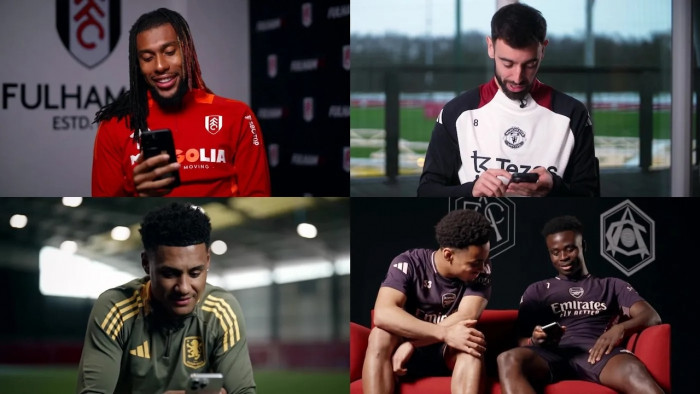The maths genius
Hugo Castillo Sanchez, chemical engineer
“The greatest players are math machines: they do instant computations to know the ideal conditions to strike a ball. Take the chip. One-on-one, the keeper rapidly approaching, the shooting angle is restricted to lifting the ball over his head into the net. The perfect calculation and the ball travels with a U-shaped, parabolic trajectory that’s impossible to catch.
“For the perfect chip, the ball has to be hit with a velocity less than 20 metres per second. Then, the gravitational force of the ball must dominate over the drag force [air resistance] and the lift force [the ball’s spin]. Finally, the air resistance must be higher than the effect of the rotating ball. Say the attacker is 12 metres from goal. The keeper rushes out, cutting his distance to the ball to six metres. The attacker has to kick the ball with a velocity under 20m/s and a max height greater than the keeper’s – around two metres. However, as the keeper can also jump to stop the shot, the attacker’s strike has to reach a vertical distance of around three metres. Then, the attacker will need to calculate the velocity and angle required. The initial velocity would need to be 10.84 metres per second with a launching angle of 450 for the ball to follow a parabolic path over the keeper and into the net, leaving 1.56 seconds for defenders to block the goal-bound chip.
“That’s the calculation – it takes ages to work out. What’s amazing is that world-class footballers, the likes of Lionel Messi, have it seemingly programmed in them to calculate in an instant, while also knowing the aerodynamic conditions required to score a perfect chip nearly every time.”
The keeper
David James, former Liverpool and England number one
“Back in the day, it was considered unsportsmanlike to chip the keeper. But the reality is, if you’re in the position to be chipped, you should be chipped. The embarrassing part is that you’re just not ready for it – in the split-second it takes you to process the shot, it’s already too late.
“I got chipped by Wayne Rooney for Portsmouth against Manchester United and it was so, so frustrating. Milliseconds after it left his foot, I was looking at the ball, thinking, “This could go in,” rather than running back to save it. I just didn’t see it coming. Perfect chips go in, and that one was inch-perfect. But when you save one, you can’t help but think that they’re cheeky for even trying to attempt it.”
LG, partners of the England men’s team, and David James surprised residents of Wembley Grove, Birmingham, with free LG TVs and sound bars so they can live the game this summer. Watch the video.
Read more: How the secret psychology of ‘wishful thinking’ could propel England to World Cup glory
The philosopher
Stephen Mumford, metaphysicist and author
“The delicacy of the chip plays into the thought of football as an art – finesse over power. The chip is one of the thrills we seek in football. We’re so used to shots generated with speed and strength that when we witness a perfectly executed chip, time appears to slow down.
“It’s all about the placement, the arc, the trajectory – the ball rising and coming down at the exact right moment, inch-perfect. I was there when Eric Cantona did it against Sheffield United in 1995. The keeper nearly reached it, the crossbar nearly deflected it. It was perfect accuracy, executed by a player who believed football was capable of higher artistic values.”
The player
Jermaine Jenas, former Spurs and England midfielder
“The chip is technically very difficult. There are so many elements at play. You have to get your foot right underneath the ball, and delicately enough that it immediately goes up and down again. The chip isn’t always arrogance. If you’re squeezed to the side of the box, you’ll know the keeper will be by his near post – chipping it might be your best option to score. The keeper won’t agree, though.
“In training, if you tried to chip them and they managed to get back and catch it, they’d take the ball and volley it as far away as possible, and then tell you to do one. But that’s what makes it one of the most satisfying shots – it’s one of the hardest to pull off.”
The psychologist
Dr Victor Thompson, clinical sports psychologist
“A chip involves more personality than skill. All top-flight footballers have the ability, but not necessarily the confidence. Players know a failed chip will mean more flak; psychologically, they’ll be more inclined to perform to the norm and attempt a more ordinary shot on goal. You’re more likely to see a chip when a team is up by four goals, when they can afford to play more freely.
“Confident players are always more likely to attempt the chip – they can block out the worry and focus on the opportunity. When it goes in, it’s a huge psychological boost for the attacking side. Defenders and keepers, meanwhile, will be humiliated. You hate what you’ve just witnessed, yet you can’t fail to admire it at the same time.”
(Image: Getty)
Latest
Related Reviews and Shortlists










